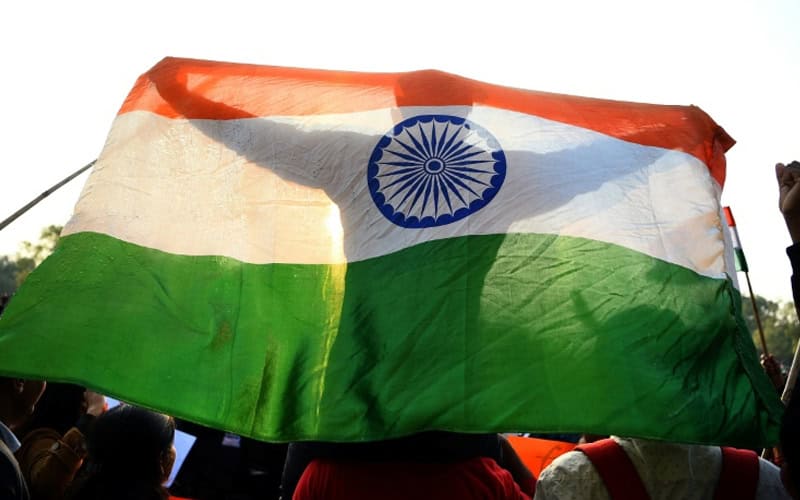April 1, 2021, marks the Congress Tricolour Flag Centenary. Pingle Venkaiah designed and presented to Mahatma Gandhi the Indian Flag at the All India Congress Committee (AICC) Session in Vijayawada on April 1, 1921.
Originally, the flag had two colours, Red and Green, representing the two dominant religions, Hindu and Muslim. This was in keeping with Gandhiji’s Ideal of Hindu-Muslim Unity, following his extending Congress support to Khilafat Movement.
Gandhiji, however, told Pingle Venkaiah to add White to represent all other religions, thus recognizing Pluralism and establishing that India is a Multi-Relgious, Mult-Lingual, Multi-Racial and a Multi-Cultural nation. Gandhiji also suggested inclusion of Charkha, as a Symbol of Self-Reliance. It was thus made of Red, White and Green.
This was an evolution of the Congress Flag, first hoisted in Kolkata in 1906; later, by Madame Bhikaji Cama in 1907; and finally in 1917, by Dr Annie Besant and Lokmanya Bal Gangadhar Tilak during the Home Rule Movement.
Pingle Venkaiah finally made the Tricolour as the Congress Flag, except that the Red was replaced with Saffron, 10 years later, in 1931.
In 1931, the present form of the flag was adopted with Saffron, White and Green and Charkha of Gandhiji in the middle.
An AICC Resolution was passed in 1931, adopting the Tricolour as the Congress Flag.
It was made clear that the colours had no religious or communal significance.
It was explained that Saffron represents Suffering and Sacrifice; White represents Peace; and Green represents Progress and Prosperity.
National Flag
The Constituent Assembly on July 22, 1947, adopted the Congress Tricolour as the National Flag, with a minor modification of Ashoka’s Dharma Chakra, in place of the Charkha, in the middle of the Tricolour.
The Dharma Chakra was depicted in the Sarnath Lions of Mauryan Emperor Ashoka and which was adopted as the National Emblem by Free India’s First Prime Minister Pandit Jawaharlal Nehru.
Pingle Venkaiah
Pingle Venkaiah was born on August 2, 1876, in Bhattlapenumarru, near Machilipatnam in Krishna district, and died on July 4, 1963, in Vijayawada.
To Pingle Venkaiah goes the credit of designing the Congress Tricolour and presenting it to Mahatma Gandhi.
For Andhra Pradesh, as for India, Pingle Venkaiah is a proud son, who was a Freedom-Fighter, Congressman, staunch follower of Mahatma Gandhi and the Designer of Congress Flag and eventually of the National Tricolour.
Congress Tricolour
The Congress Tricolour is a Symbol of the National Freedom Struggle conducted through Ahimsa or Non-Violence.
The Congress Tricolour is Symbol of the National Social and Political Ethos of India, based on a multi-relgious, multi-lingual and multi-cultural society.
It was under this Congress Tricolour that the party waged the Freedom Struggle. Several landmark Movements took place under the Congress Tricolour, like the Flag Satyagraha in 1923, the Salt Satyagraha and Civil Disobedience Movement in 1930 and the Quit India Movement in 1942.
It was under this Tricolour that India attained Independence on August 15, 1947. Under this Tricolour, India achieved progress and development and emerged among the Fastest-Growing Economies of the World.
Chauri-Chaura
Mahatma Gandhi withdrew the call of Non-Cooperation Movement on February 12, 1922. Gandhiji decision came, following the violence in Chauri Chaura in Gorakhpur district, on February 4, 1922, where a mob set fire to a police station, after the police opened firing on them.
Gandhiji was shocked by the incident, in which 22 policemen were killed. He was against Violence and wanted the Movement to go on through Ahimsa or Non-Violence.
Many in the Congress were taken aback by the decision of Gandhiji. They felt bad that right at a time when the Non-Cooperation Movement was gaining momentum, Gandhiji called it off.
Ali Brothers broke away. Motilal Nehru and Chittaranjan Das floated the Swaraj Party to contest the elections.
For Gandhiji, however, the means were as important as the goal. He felt the people were not yet ready for such a movement, which was based on Ahimsa, or Non-Violence.
Flag Satyagraha
In 1923, the Flag Satyagraha was launched, initially in Nagpur and Jabalpur. After the Non-Cooperation Movement, the Flag Satyagraha was the first act of defiance against the British Imperialism.
By hoisting the flag on private and public buildings, the Congress challenged the legitimacy of the British Rule and its laws restricting the hoisting of nationalist flags.
In 1930 came the Civil Disobedience Movement, positively breaking the laws. Finally the bugle was sounded with the Quit India Movement in 1942, eventually leading to the Indian Independence on August 15, 1947.
The Congress Tricolour represents the saga and struggle of the Indian Independence Movement and the building of the New India.
The Congress Tricolour also represents the national social ethos, which is based on love, as opposed to the politics of hatred.
Gandhiji taught the people to oppose British Imperialism with all their might, but not to hate the British people. It was this thought-process that prompted Pandit Jawaharlal Nehru to decide on India remaining within British Commonwealth, thereby changing its very character.
Venkat Parsa is a senior journalist and writer based in New Delhi.

